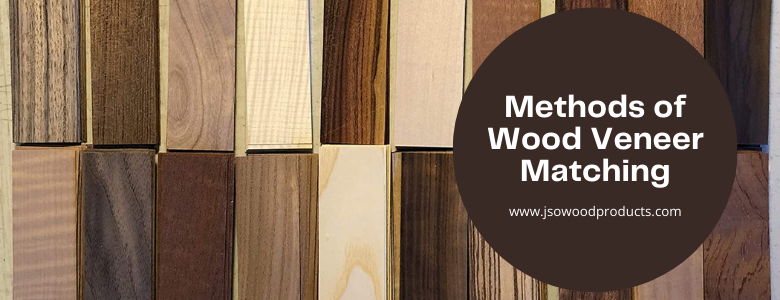Wood Veneer
Methods of Wood Veneer Matching
Wood Veneer Matching refers to the construction of wood panels using wood veneer sheets. There are multiple ways veneer sheets can be matched. Check out the methods of matching used in this technique in five different options.
1. Book Match
The book matching technique is leaves that are placed consecutively. They face open to each other. The process looks much similar to an open book. The leaves mirror each other like the pages of a book. Thus, it creates a very symmetrical pattern. This is the most common form of matching veneer together to make sheets. Most Flat Cut or Plain Sliced veneer is laid up in this manner.
Additionally, this pattern exaggerates the grain and the decorative outlook of the log. However, this book matching technique requires much caution due to the risks involved. This is because a simple error can cause a color variation. You need to carefully flip each veneer sheet or else it will create a “barber pole” effect. The “barber pole” effect occurs when leaves show alternating tight and loose faces. Hence, there is no unilateral acceptance of light or stain.
2. Random Match
Random Match sheets don’t follow any specific pattern while being matched. In fact, the process accepts flitches of veneer regardless of the grain of the log, the pattern, or even the color. There is no specific guarantee of visual continuity. This creates a more rustic or casual style. A planked appearance that is currently very popular in Knotty Hickory, Aromatic Cedar, Knotty Alder, and White Oak as well as a few others.
The appearance resembles random boards assembled to build a pile. Mismatching is the goal here to get the desired look.
3. Slip Match
The Slip Match typically process uses veneer sheets, which are quarter or rift sliced or straighter grain. In this process, the matching sequence results through slipping one veneer sheet after another consecutively. This way, it forms the panel face of the board. Therefore, you can see all the sides having the same face and being exposed. The grain figure is repetitive in the visual effect. However, the joints do not follow a similar grain pattern match. This is often used to avoid a “barber pole” appearance. So they panels don’t have such a plank look.
4. End Match
The End match or butt match is quite interesting. The end of one leaf is interwoven with the end of the other leaf. This creates a long panel of wood veneer sheets. Mostly, the end match comes handy in case of increasing the current length of the veneer sheets available. This works especially for panels meant for high walls and long tables. There will be a visible line, but the veneer flows together to minimize this affect.
There are two types of end match. First the architectural type where leaves are matched end-to-end, and then side-by-side. This creates a continuous lengthy pattern. Second is the Panel End Match. Matching of veneer leaves takes place on subassemblies. This is a more cost-effective method of end matching. Plus, the appearance is quite pleasing.
5. Radial Starburst Match
Radial matching is a slightly complex method. You cut a segment or a few segments. The segments are to be cut from a flitch having consecutively cut veneer sheets. Next, you join these sheets together with a tapered edge of the segments towards the central area. Therefore, you’ll have edge joints, which are book-matched scattering from the central point. Through radial matching, you can create a starburst matching.
JSO Wood Products has the experience and knowledge to help with your wood project! Call 502-425-2541 or e-mail steve@jsowoodproducts.com.
